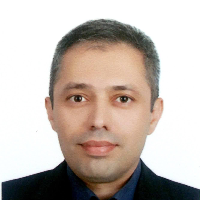Development of Numerical Software for Nonlinear Dynamic Analysis of a Concrete Dam-Reservoir Foundation System, with Suitable Absorption and Moving Boundary
Numerical modeling of concrete arch dams by considering dam-reservoir-abutment interaction is a complicated ubject in the field of engineering. This complexity is due to different factors, such as interaction between different media, the nonlinear behavior of concrete and bedrock, expansion joints in the dam body, faults and major joints in the abutment rock and etc.In past years, extensive research in various fields related to the analysis and design of concrete dams has been undertaken, but the need for more accurate modeling of abutments in a coupling system, considering mass, flexibility and non-homogeneity of a discontinuous rock foundation, is still required. Furthermore, the structural strength of an arch dam under ground motion is strongly dependent on the stability and strength of its abutments. Actually, even high safety margins for unexpected ground motion do not guarantee the stability of a dam if it is established on an uncertain foundation.In this research, finite element software for nonlinear dynamic analysis of concrete dams is developed that can simulate the interactive situation and precisely evaluate the dam response. Some features of the developed numerical program are its ability to model water-structure-rock interactions, the nonlinear behavior of concrete and abutment rock, the contact behavior of dam expansion joints and foundation discontinuities, appropriate boundary conditions for the far end cut out of the reservoir and the rock foundation, and the proper abutment in-situ stresses. The present study sets out to investigate the non-linear seismic response of a dam-reservoir-foundation system, taking into consideration the effects of a discontinuous rock foundation. After verification of different aspects of the program, a typical case study of a concrete dam (Karun 4 Dam) under seismic loading, considering its effective factors, is studied. The analysis results approve the importance and significance of different factors, such as modeling the discontinuous flexible massive foundation, along with appropriate absorption and moving boundary conditions, on the seismic response of dams, leading to a more precise design of new dams and better control of existing ones.
-
Lightweighting in Iranian Architecture: From Structural Solutions to Integration with Architectural Space, with an Emphasis on the Dome of Soltaniyeh
Ahad Nejad Ebrahimi*, Ghazaleh Sarencheh, Mohamadreza Chenaghlou
Athar Journal, -
Investigating the effect of particle shape on energy components in granular media under cyclic loading by discrete element method
Haleh Meshginghalam, Mehrdad EMAMI Tabrizi *, Mohammadreza Chenaghlou
Amirkabir Journal of Civil Engineering, -
An Overview of Research Conducted on Various Types of Yield Steel Tubular Dampers
Yashar Hodaipour, *, Yousef Hosseinzadeh, Leila Hosseinzadeh
Journal of Structural Engineering, -
Numerical Investigation of Long-term Sediment Transport Pattern of Zarabad Fishery Harbor – Sistan and Baluchestan
Aerfeh Emami*, Ahmadreza Mostafa Gharabaghi, Siavash Salimi Turkamani
Journal of Marine Engineering, -
Experimental study of Bed Pattern around the Cylindrical Pile under Broken Waves
Akbar Kiasalary, AhmadReza Mostafa Gharabaghi
Journal of Hydraulic Structures, Autumn 2023 -
Investigation into the behavior of a upgraded section used for Concrete-Filled Steel tubular Columns (Upgraded CFT) Under Cyclic Loading
Hadi Barghlame, *, Seyed Arash Mousavi Ghasemi
Journal of Structural and Construction Engineering,





